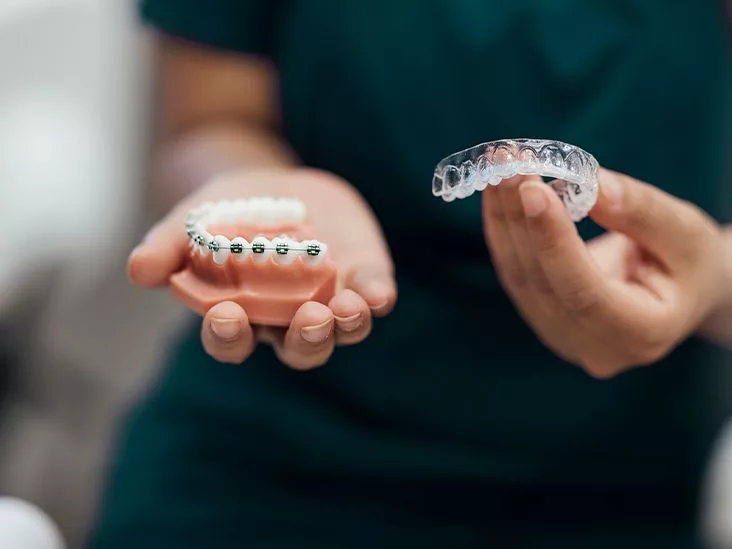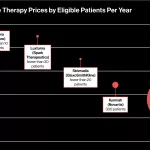Thinking about straightening your teeth and wondering whether invisible aligners or traditional braces will work best for you? The short answer is: it really depends on your bite, your budget, and the day‑to‑day habits you can stick to. Below you’ll find a friendly, no‑jargon rundown of the two main orthodontic routes, peppered with real‑world examples, cost insights, and a simple checklist to help you decide.
Grab a cup of coffee, settle in, and let’s walk through the pros, cons, and everything in‑between – all in a tone that feels like a chat with a knowledgeable friend who’s been there, done that, and wants you to feel confident about your smile journey.
Basic Differences
First things first: what exactly are we comparing?
What are traditional braces?
Braces are the classic “metal on your teeth” system most of us picture from movies. Small brackets (either metal, clear ceramic, or even hidden lingual) are bonded to each tooth and linked by a metal archwire that applies continuous pressure. The wire is tightened over time, nudging teeth into their proper spots. Braces stay fixed for the entire treatment, meaning you don’t have to remember to put anything in or take anything out.
What are clear or invisible aligners?
Invisible aligners are a series of custom‑molded, clear plastic trays that snap over your teeth. Each tray moves your teeth a little bit, and after about one to two weeks you switch to the next set. Because they’re removable, you can take them out to eat, brush, and floss. Brands like Invisalign®, Spark®, and 3M Clarity fall into this category.
How do the forces differ?
Braces use a fixed archwire that delivers steady, unbroken force. Aligners rely on the plastic’s shape‑memory and, for tougher movements, tiny composite “attachments” bonded to specific teeth to give the tray something to push against. Both approaches are rooted in solid biomechanics; the choice is mostly about how you want that force delivered.
Appearance Matters
If you’ve ever watched a teenager grimace at the sight of metal brackets, you know why aesthetics matter. Let’s compare visibility.
Are clear aligners truly “invisible”?
According to Smile2Impress, aligners are “more discreet than clear braces” because the plastic is thin, translucent, and doesn’t cover the gums. Most people can’t even tell you’re wearing them unless you point it out.
When are braces less visible?
Ceramic brackets match the tooth colour, making them far less noticeable than metal. Lingual braces sit on the back side of the teeth, so they’re invisible from the front. However, they’re technically still “braces” and require the same hygiene routine.
Does visibility affect confidence?
Many patients report a boost in self‑esteem as soon as they switch to a less‑obtrusive option. One teen I consulted told me he finally stopped hiding his smile in photos after moving to clear aligners. That confidence can be a powerful motivator to stick with the treatment plan.
Daily Comfort
Let’s talk about the everyday experience – eating, brushing, and that occasional sore spot.
Food restrictions with braces
With metal or ceramic braces, you’ll need to avoid hard candies, popcorn, nuts, and anything that could snap a wire. A sports drink bottle that’s too big can even bend a bracket. Those restrictions are a reality, especially for kids who love crunchy snacks.
Can you remove aligners to eat?
Absolutely. Aligners are designed to be taken out for every meal. That means you can still enjoy a steak, a bag of chips, or a sticky caramel without worrying about breaking a bracket. After eating, you simply brush, pop the trays back in, and you’re good to go.
Hygiene made easy
Because you can take aligners out, brushing and flossing are just like they would be with a natural smile. Braces, on the other hand, can trap food particles, making flossing a bit of a chore. Over‑the‑counter floss threaders help, but many patients find the extra effort a noticeable inconvenience.
Common soreness and ulcers
Both appliances can cause mild discomfort when new forces are applied. Braces often lead to small mouth sores where the wire rubs against the inner cheek. Aligners tend to cause a “tightening” feeling that eases after a few days. If you experience persistent pain, a quick visit to your orthodontist usually resolves it.
Treatment Time
Everyone wants the fastest route to a straight smile, but speed isn’t the only factor.
Are aligners as effective for complex cases?
Modern aligners can handle a surprising range of issues—from mild crowding to moderate overbites. However, for severe rotations, large gaps, or skeletal discrepancies, traditional braces often remain the gold standard. Your orthodontist will run a digital scan and tell you which method can achieve the desired outcome.
Typical timelines
- Braces: 12‑36 months, depending on severity.
- Clear aligners: 12‑18 months for most adult cases; some may take longer if compliance drops.
Compliance matters
With aligners, you must wear them at least 22 hours a day. Miss a few days and the whole timeline stretches. Braces, being fixed, don’t rely on daily wear, which is why they can sometimes be a bit faster for complex corrections.
Cost Overview
Let’s get real about the wallet.
Average price of metal braces in the U.S.
According to the American Association of Orthodontists, the national average for traditional braces ranges from $3,000 to $6,000, depending on the type (metal, ceramic, lingual) and geographic location.
Average price of clear aligners
Clear aligner treatments typically sit between $4,500 and $7,500. Premium brands with proprietary scanning and treatment planning (like Invisalign®) can sit at the higher end, while newer competitors may offer more budget‑friendly packages.
What drives the price difference?
- Materials: Metal brackets are inexpensive; clear plastic trays require a lab‑manufacturing process for each set.
- Number of trays: More complex movements need more trays, raising costs.
- Insurance: Many dental plans cover a portion of braces but less often cover aligners, though some orthodontic insurance plans are expanding coverage.
- Hidden fees: Retainers, emergency repairs, and refinements can add $500‑$1,000 extra.
Ideal Candidates
Not every smile fits into a single box. Here’s a quick guide.
Best cases for braces
Severe crowding, large overbites, open bites, and complex rotational issues generally respond best to fixed appliances. Braces also excel for younger patients whose jaws are still growing, allowing the orthodontist to make broader skeletal adjustments.
Best cases for aligners
Adults with mild‑to‑moderate crowding, spacing, or simple overbite corrections often find aligners ideal. Those who prioritize aesthetics, have active lifestyles (sports, musical performances), or need to remove the appliance for professional reasons (e.g., frequent public speaking) also lean toward aligners.
Age considerations
Teens can use either, but braces are often recommended for younger patients because compliance (wearing aligners enough) can be harder to enforce. Adults, especially professionals, frequently opt for clear aligners to maintain a polished look during treatment.
Real Stories
Numbers are useful, but personal experiences bring the facts to life.
Case A – Adult with moderate crowding
Maria, a 32‑year‑old graphic designer, wanted a discreet solution for her slightly crowded front teeth. After a digital scan, her orthodontist recommended a six‑month clear aligner plan costing $5,200. She loved that she could take the trays out for client lunches and never missed a brush. The result? A straighter smile and a boost in confidence that even showed up in her portfolio.
Case B – Teen with severe bite
Jacob, 14, had a pronounced overbite and several rotated incisors. His orthodontist chose traditional metal braces because the required movements were complex. The treatment lasted 28 months and cost $4,800. While Jacob missed a few favorite foods, he appreciated the “set‑and‑forget” nature of the braces and never worried about forgetting to wear a tray. The final outcome was a perfectly aligned bite that required no refinements.
Before‑After Snapshot
Imagine a side‑by‑side of a smile before treatment (crowded, uneven) and after a 12‑month aligner journey – teeth aligned, gaps closed, and the patient smiling with genuine pride. This visual transformation is what most patients aim for, regardless of the appliance.
Decision Checklist
Now that the facts are on the table, here’s a quick self‑assessment to help you decide which path feels right.
| Factor | Clear Aligners | Traditional Braces |
|---|---|---|
| Visibility | ~95% invisible | Visible (metal) or semi‑invisible (ceramic) |
| Removability | Yes – eat, brush, floss anytime | No – fixed appliance |
| Treatment Time (average) | 12‑18 months | 12‑36 months |
| Cost (US avg.) | $4,500‑$7,500 | $3,000‑$6,000 |
| Best for Complex Cases | Moderate cases | Severe/multiple issues |
| Lifestyle Fit | Active, frequent travel, sports | Less need for daily compliance |
Quick Questions to Ask Your Orthodontist
- What specific movements does my case require?
- How many appointments will I need during treatment?
- What are the exact cost components (incl. retainers, possible refinements)?
- Will my insurance cover part of the treatment?
- What is the expected timeline if I miss a few days of aligner wear?
Wrapping It Up
Both invisible aligners and traditional braces can give you a straight, healthy smile, but they serve different lifestyles and dental needs. If you value discretion, love the freedom to eat anything, and can commit to wearing trays most of the day, clear aligners are a compelling choice. If your bite is more complicated, you prefer a set‑and‑forget device, or you’re working within a tighter budget, braces might be the better route.
Take the checklist above, talk openly with a certified orthodontist, and let your personal goals—budget, aesthetics, treatment length—guide the decision. Your smile is a long‑term investment in confidence and oral health, so choose the path that feels right for you.
Ready to take the next step? Book a free consultation with a local orthodontic practice, ask for a digital scan, and get a personalized treatment plan. You’ve got all the information now—go ahead and make the choice that puts a genuine grin on your face!


















Leave a Reply
You must be logged in to post a comment.